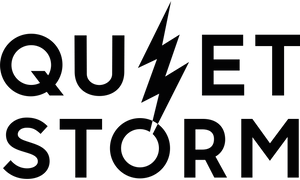
Meaningfully Moving The Dial On Race Equity

The Black population in the UK represents 11% of the workforce, but when it comes to the advertising industry, this number drops to 3%. Looking further into C-suite roles, it’s further reduced to a mere 1% of Black representation at senior levels.
With these numbers in mind, Julian Douglas, CEO at VCCP, chair at BRiM (Black Representation in Marketing) and president at the IPA says, “The IPA’s Future of Fairness document was written a year ago. That has a 10-step roadmap on how to tackle this. So we know we've got to do it, we just really need to get on with it.” He further reflects that the panel and the interest from businesses show a positive step in the right direction.
Rania Robinson, CEO of Quiet Storm, director at Create Not Hate and VP of WACL shared that she’s seen more interest from businesses looking to actively run programmes and recruit in a more inclusive way. “In terms of the conversations we're having, I would say that there is a much stronger interest and commitment to driving this change than I've ever seen before,” she says.
However, part of the issue lies in the minority workforce exiting the industry. “Although we're seeing increases in representation and presence in companies, Black and other minority audiences massively over-index in thinking of leaving the industry”, says Jerry Daykin, VP and head of media at Beam Suntory. He argues that the issue isn’t simply encouraging minorities to join the task force, but seeing people that look like you, with your background at a C-suite level.
As the pandemic shifted the way the industry operates, pushing people out of their comfort zone and still continuing to create work that appeals to the audience and creates an impact, Julian poses the notion that we are able to create a change. “We've shown what we can achieve if we commit,” he says, “taking that same mindset to diversity and inclusion, we can make a massive impact if we get some urgency behind it.”
Consensus dictates that ‘easy fixes’ come in the form of entry-level roles and representation on screen, whereas it’s the systemic work that takes longer and needs to shift. The key factor in making a difference is working top-down and changing company values as well as true buy-in at a senior level, committing to the diversification of not only a company, but the content they create. It also comes from real changes being made by the RFI.
“The thing that's driven change the most has been advertisers on the RFI demanding a diverse team and also agencies, in the Campaign school report, having to show your diversity figures. Those two things have driven change more and more than any good intention in the world.”
Part of committing to the cause involves creating a budget which allows for upskilling the workforce in place. Julian says, “Often initiatives, especially on race, can end up being an extra burden on the people in those underrepresented minorities, that becomes an extra job for them to do on top of the day job, which is already more challenging anyway. Being cognizant of those barriers, and how we need to get over those, I think we’ve got more chance of achieving it.”
A sense of inertia was referenced, relating to perceived strides in external representation, the notion that ‘there are loads of Black and gay people in adverts.’ In actuality, Jerry reminds us that we have to be mindful of seeing one diverse background character when in actuality, the industry is far from accurately representing the demographic of minority individuals. Though there is more representation of Black and minority individuals, a study of previous Cannes Lions winners showed how they are often portrayed to be both less intelligent and less educated.
Creating a space for authentic representation means systemic change according to Rania.
“It’s about making sure it's not at the end of the process. Where are the people behind the camera? Where are the people writing the stories? Where are the people part of the strategy?” Anything less is a quick fix, which Rania says can often be forgotten during moments of stress when the reaction is often to return to “default mode”, where pressure leads to old habits returning.
The consensus was that systemic change from top-down implementation, check listing values to hold people accountable and demonstrating the impact of meaningful change, is the best way to move towards a fairer representation of race within the UK advertising market.














